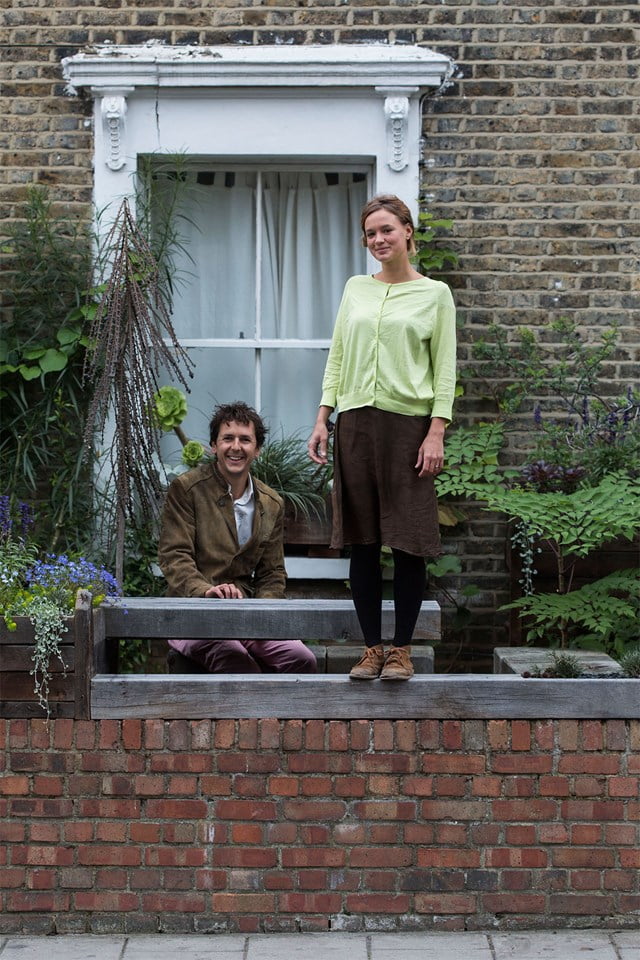Dan Bristow is the London-based garden designer behind Propagating Dan. This year will mark his debut at the Chelsea Flower Show – his Garden of Potential counts amongst its influences Icelandic meadows, the Buddhist concept of oneness and Snowdonian boulders. An enthusiastic plant hunter, in the last five years Dan has journeyed to Japan, China, Colombia, Sri Lanka and Nepal to see new plants growing in their natural habitat. He is not afraid of incorporating plants deemed as unfashionable if they work within his schemes – his Chelsea garden will feature acid-green Leylandii!

What are you currently working on?
We’re currently putting the finishing touches to a large project in Hither Green, London. We’ve totally redesigned the back garden – it now features a large wildlife pond with a flagstone path through it, a feature shed topped by a bespoke living roof with eaves and a gravel garden with wildflowers, made of the crushed stone normally used as a base to build roads.
 Oskar Proctor
Oskar ProctorDescribe your aesthetic – what or who would you say inspires your work?
I’d like to think that I don’t have a ‘house style’ – my work is always borne out of the collision between place, context, and, of course, people. I try to include new elements in every design I make; whether it’s a new landscaping material, some unusual plants to add to the palette or a new way of using the space.
My plant-hunting trips, which have taken me around the world, have informed my work enormously. On a recent trip to China I watched carpenters construct a traditional pavilion. I look at boulders in a new way after witnessing their veneration in India.
 Oskar Proctor
Oskar ProctorDo you have an all-time favourite plant? If so what is it and why?
Right now my top pick for a garden plant is Ugni molinae, the Chilean Guava. Reputedly Queen Victoria’s favourite fruit, it has so much going for it! It’s evergreen, with wonderfully scented leaves and works well as topiary. It also produces dainty bell-shaped flowers followed by delicious wine-flavoured fruits.
 Oskar Proctor
Oskar ProctorWho taught you to garden?
My parents taught me all the wild plants in the hedgerow in both English and German. I always loved knowing which plants I could pick to eat there and then, such as sorrel, rosehips and chickweed. Two decades later I got back into gardening via the circuitous route of graphic design and tour managing bands, and started at the bottom. Above all I blame Pokemon – that highly-addictive game of gathering allies with various attributes, strengths and weaknesses. I’m convinced that my love of learning new plants with their habits and requirements has its spiritual forebear in Pikachu et al!
 Oskar Proctor
Oskar ProctorTell us about your own garden – what do you grow there?
My garden is currently a collection of weird and wonderful plants – with almost no design consideration whatsoever! There are grasses grown from seed collected in Colombia and Taiwan, a cold frame with seedlings and cuttings and a raised pond, home to my two goldfish, Skunk and Cabbage.
 Oskar Proctor
Oskar ProctorDo you have a favourite garden?
Last summer, I happened upon the Villa D’Este in Tivoli, Italy, with no prior knowledge of its wonders. It blew me away! The powerful yet intricate use of water is phenomenal, as are the grottoes with maidenhair ferns partially obscuring mythical creatures.
I was deeply moved by the famous temple and garden at Ryōan-ji in Kyoto, Japan, too, for entirely different reasons. Paring back unnecessary elements really does focus the mind and channel a more concentrated appreciation of your surroundings.
TOP TIP
Plant window boxes with succulents and other desert plants. These can be dramatic and will be very forgiving when you go away on holiday – there’s no need to worry about them if you leave them for week in summer and didn’t get round to soaking them beforehand. Dead lavender is not a good look. Instead try Fascicularia, Echeveria, Cotyledon orbiculata and Aloe striatula. Many of these drought-resistant plants won’t die in our cold winters as long as you let the soil go dry through winter. All you have to remember is not to water them!

[Source:- House]



